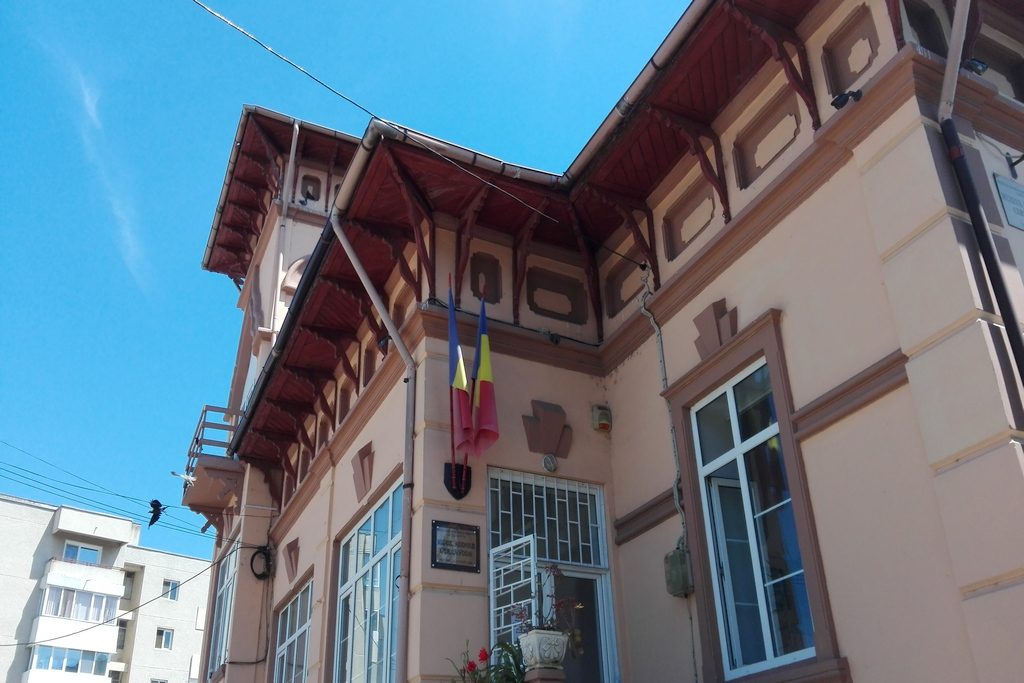

The Museum was inaugurated on 3rd of June 2006. The general profile of the museum is archeological one, the main profile is the prehistoric archeology, Daco-Roman archeology, history.
The building has served over time as the fire center, as the home of the Pioneers. Restored and saved from demolition, the building exhibits in its 5 rooms and a lobby, the prehistoric archeological and Roman local and regional collections, pieces of decorative art from XIX century, monuments and personalities who have marked the history and image of the city.
Hall no. 1 exhibits the neo-Eneolithic period (5500-2500 i.e.n). Here we can find the „Thinker and his pair”, masterpiece of Neolithic sculpture discovered at Cernavoda in a tomb within the burial necropolis on the Sofia Hill (1956). In this area were identified settlements and cemeteries belonging to Hamangia, Gumelnita, Cernavoda I, III and II periods with a rich archeological inventory: pottery, weapons, flint tools, ornaments and religious objects (Vmillenium BC.), bone materia.
Hall no. 2 exhibits the Hallstattian period – the first Iron Age (1200- 450/300 i.e.n), which knows cultural events, with specific features. The Culture denomination is given after the town of the same name in Austria. At several points in Cernavoda are approved settlements and cemeteries belonging n to the following periods Babadag II and III: a Thracian Hallstatt oppidum is mentioned on the Sofia Hill (X-VIII century BC) defended by a wall of earth and stone. The funeral inventory of a Hellenic tomb of Medgidia II. sec. BC can be admired, – Hallstatt dishes from Cernavoda and Rasova areas – Greek import ceramics in Malul Rosu, Greek vessels of common use (sec. III-II BC), amphora containers of Heraclea Pontica and Chios ( sec. IV BC), funerary urns.
Hall no. 3 is dedicated to early period of Dacia occupation by Romans, as a result of the two wars of territorial conquest concluded with Carpathian-Danube-Pontic conquest and transformation into a Roman imperial province. After some researches, the great archeologist Grigore Florescu has discovered in Cernavoda a stone quarry exploited by Romans with Hercules Saxanus (Ripensis) representation of whom image can be seen and admired in a drawing exposed in the hall (the original is at the Museum of National History and Archaeology from Constanța). Monetary issues can be seen, Roman Republicans dinars coming from isolated finds. There is also the Rasova Roman pottery discovered at Cernavoda, inscriptions on bricks with names of military units stationed in the area.
Hall no. 4 corresponds to late Roman period (end of III-IV century AD) and exhibits vestiges of the Roman presence in Axiopolis, Capidava, Sacidava and Basarabi. A plan of the city and its stages of construction can be studied. Evidence of Christianity in Scythia Minor: the hypogeu plate grave, dated in VI cnetury, outside the city Axiopolis, a reproduction of a limestone plate mentioning the three martyrs: Chindeas, Cyril and Dasius (Tasios) ( IV sec.), thread and bronze objects and a map of the ramparts from Dobrogea.
The Museum’s Hall, dedicated to IXI-XX century, is evoked the Anghel Saligny personality, the bridge’s model built by the great engineer and inaugurated in 1859, this magnificent iron braided broke through the time to us, an bridge construction stages album, pictures with the largest construction project, Romania – Danube-Black Sea Canal.
